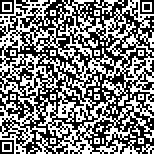下载中心
优秀审稿专家
优秀论文
相关链接
摘要

大气气溶胶成分的复杂变化导致其在气候变化评估中具有很高的不确定性。气溶胶成分遥感利用遥感观测的气溶胶光学—微物理参数,定量估计整层大气气溶胶主要成分含量,具有实时快速、空间覆盖、保持气溶胶自然状态等特点。本文介绍了近年来气溶胶成分遥感在理论基础和观测研究方面的进展情况。首先,在简要回顾反演算法发展的基础上,以目前较先进的成分遥感分类模型(包括黑碳、棕色碳、沙尘、非吸光有机物、细粒子无机盐、海盐和水)为例,详细分析了气溶胶成分遥感反演的思路。据此提出了基于气溶胶综合光学—微物理特性(包括光学吸收/散射、粒径尺度、形状等敏感性特征参数)的气溶胶成分遥感识别方法。之后,结合气溶胶混合方式,讨论了复折射指数计算方法及其对成分反演的影响,并给出了利用同步化学采样观测验证气溶胶成分遥感的一些结果示例。最后,结合观测手段拓展、成分模型优化、反演精度提升、应用能力推广等4个方向,展望了大气气溶胶成分遥感的发展趋势,及其在全球气候变化评估等领域的应用。
Complex and drastic variations of atmospheric aerosol components lead to high uncertainties in climate change assessment. The remote sensing of aerosol composition is the technology often used in aerosol optical and microphysical parametric analysis. These parameters, which are derived from remote sensing measurements, can quantitatively estimate the aerosol components of the entire atmosphere. Remote sensing offers the advantages of real-time and fast detection, spatial coverage, and maintenance of natural aerosol status. This paper presents a comprehensive review of theories, observations, models, and algorithms for aerosol composition remote sensing. First, in the area of algorithm development, we analyze the main ideas and methods for establishing aerosol composition models. In particular, an advanced remote sensing categorization model, which includes black carbon, brown carbon, mineral dust, light-scattering organic matter, inorganic salts, sea salt, and water, is presented in detail. The methods are identified or distinguished according to components (i.e., sensitivity parameters, including light absorption, size distribution, particulate shape, etc.). Second, for the calculation of the refractive index, some of the typical methods suitable for different aerosol mixing states are compared, and then their impacts on composition retrieval are determined. Third, some examples of remotely sensed aerosol components are given, and a preliminary validation of the retrievals is conducted by using synchronized chemical measurements. Finally, the development tendencies of the remote sensing of atmospheric aerosol composition are summarized from the perspectives of observation capability enhancement, optimization of the categorization model, improvements in retrieval accuracy, extension of application abilities, and identification of utilization prospects in global climate change assessment.

